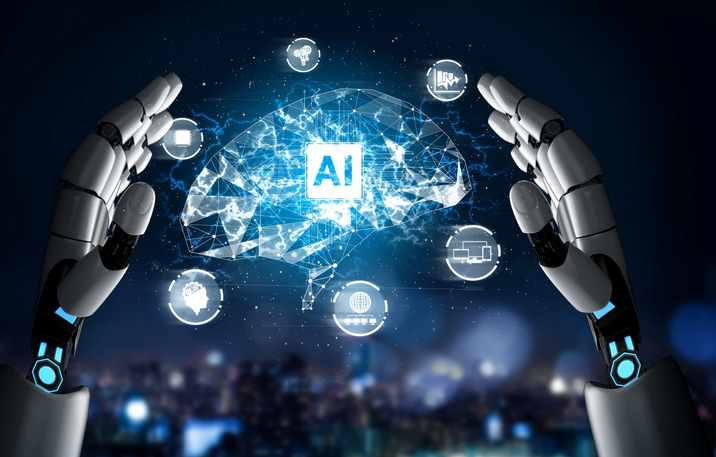How Do AI Integration Solutions Improve Business Efficiency?

Running a business today isn’t easy. With rising costs, growing competition, and customers expecting faster service, companies need smarter ways to stay ahead. That’s where AI integration solutions come into play. Instead of adding more pressure on your team, these smart tools help your business work more efficiently by handling routine tasks, offering helpful insights, and allowing your employees to focus on the things that truly matter.
AI Integration Solutions are designed to connect with your existing systems—like customer support platforms, marketing tools, or inventory software—to streamline operations and improve overall performance. By bringing AI into your daily workflow, your business can work faster, make smarter decisions, and reduce the chances of human error.
In this blog post, we’re going to explore how AI integration boosts your company’s efficiency, helps team members, saves money, and positions your business for future growth. This isn’t just a techie topic—it’s practical, useful, and within reach for businesses of all sizes.
1. Streamlining Routine Tasks
a) Automating Customer Support
Many businesses spend a lot of time answering the same questions over and over, from basic product details to order status. AI-powered chatbots and virtual assistants can be integrated into your website or apps to automatically handle these routine queries.
-
They can work around the clock, so customers get instant answers even after hours.
-
They handle multiple inquiries at once, reducing wait time and improving customer satisfaction.
-
When questions become complicated, the chatbot passes them on smoothly to a human agent.
b) Speeding Up Back-Office Operations
A surprising amount of time goes into repetitive tasks, like entering data, generating reports, or managing payroll. By integrating AI with your existing accounting or HR systems, you can automate things like:
-
Invoicing and expense approvals
-
Employee onboarding and ID checks
-
Monthly reporting and compliance tracking
This eliminates manual work, reduces errors, and lets your staff spend more time on higher-value tasks.
2. Smarter Decision-Making with Data
a) Turning Data into Insights
Every business collects data—on sales, customer behavior, website visits, inventory, and more. But raw data doesn’t help until you turn it into insight. AI integration solutions can gather data from multiple sources, analyze it, and present it in easy-to-understand dashboards or reports.
This means you can:
-
See which products are selling best (and which aren’t).
-
Understand seasonal trends so you can stock smarter.
-
Predict future demand and reduce wasted inventory.
b) Real-Time Tracking and Alerts
AI integration can set up real-time tracking of key metrics, like sales dips, web traffic changes, or order delays. You receive alerts when something out of the ordinary happens, letting you react fast. For example:
“If orders drop by 20% today compared to yesterday, send me a notification.”
That’s faster than waiting for your weekly report.
3. Enhancing Your Marketing Game
a) Personalization at Scale
AI can make your marketing feel personal, without draining your team. By integrating AI into your email systems or customer platforms, you can send messages tailored to each person’s behavior.
For example:
-
Send special offers to customers who have reached a certain spending threshold.
-
Follow up with customers who abandoned a shopping cart.
-
Recommend new products based on past purchases.
This personal touch can significantly boost your click-through rates, conversions, and customer loyalty.
b) Smarter Ad Campaigns
Managing ad campaigns—on platforms like Facebook, Google, or Instagram—can be complex. AI can help by:
-
Analyzing which ads perform best.
-
Adjusting budgets automatically.
-
Targeting ads to the most relevant audiences.
-
Testing different images and messages to see what works best.
All of this is done quicker and more efficiently than manual monitoring.
4. Boosting Operational Efficiency
a) Operations and Supply Chain
For product-based businesses, keeping inventory levels just right is critical. AI integration helps by predicting demand based on historical data, seasonal trends, and external factors (like holidays or weather).
With AI, you can:
-
Reduce excess stock.
-
Manage automatic re-orders from suppliers.
-
Prevent stockouts with timely restocking.
This leads to smoother production cycles, happier customers, and better cash flow.
b) Smarter Scheduling
For service providers—think salons, repair shops, consultancies—no-shows and scheduling conflicts hurt revenue. AI tools can optimize schedules by:
-
Automatically assigning staff based on skill and availability.
-
Sending appointment reminders to clients.
-
Handling rescheduling automatically.
You reduce missed appointments and make sure your operations run smoothly.
5. Predicting and Reducing Risks
a) Fraud Detection
Whether you’re in finance, retail, or e-commerce, fraud is always a risk. AI solutions can spot unusual patterns in transactions—like strange purchase sizes or inconsistent customer locations—and alert you to investigate.
This prevents potential losses and keeps your operations secure.
b) Cybersecurity Integration
Security threats evolve constantly. AI-integrated systems monitor network activity in real time, identify unusual behaviors (like strange login attempts), and can even block threats automatically. This proactive approach helps you stay a step ahead of attackers, without needing a large security team.
6. Delivering Better Customer Experiences
a) Omnichannel Support
Today’s customers want help through many channels—website chat, SMS, social media, or phone. AI integration ensures messages are routed to the right channel and checked for urgency.
For example:
-
A chatbot welcomes a web visitor and gathers basic information.
-
If the issue is complex, AI sends all background data to a live agent.
-
Later, an AI-powered email follow-up reviews the experience and suggests helpful resources.
This makes support more seamless and satisfying.
b) Smart Feedback and Surveys
AI can analyze customer feedback from surveys, reviews, or social media comments. It looks for keywords and sentiment to spot trends, like rising dissatisfaction with shipping delays.
This gives you actionable insights without having to read every comment manually.
7. Empowering Employees and Teams
a) AI in Training and Onboarding
New hires can be overwhelmed by information. AI-powered training chatbots can answer questions, provide guided tutorials, and track progress. This helps staff get up to speed quickly without burdening HR or trainers manually.
b) Collaboration Made Easy
In fast-paced environments, teams need access to information quickly. AI can integrate with internal knowledge bases or document systems to provide fast answers.
For instance:
-
“What was our policy on returns?”
-
“Show me last quarter’s sales report.”
With AI’s help, employees stay productive, informed, and independent.
8. Cost Savings That Add Up
a) Reduce Labor Costs
By automating repetitive tasks—like data entry, report generation, or simple customer queries—AI frees up your team’s time. This allows you to either do more with the same staff or reassign people to higher-value roles.
b) Cut Error-Related Costs
Manual work often leads to mistakes. AI-driven processes reduce errors in classification, calculation, or compliance, saving money that would otherwise be spent correcting issues.
c) Operational Savings
By optimizing inventory, marketing spend, and staffing, AI can lower operational costs. Smarter planning means fewer stockouts, less waste, and more efficient ad budgets.
9. Staying Ahead of the Competition
a) Faster Innovation
With AI handling the boring stuff, your team gains time to think creatively and build new products or services. You become more agile in responding to market changes.
b) Seizing New Opportunities
AI can uncover market trends or untapped customer segments. By integrating AI, you can quickly test and validate new ideas, putting you ahead of competitors who are slower to adapt.
10. Taking the First Steps
If you’re considering AI integration but aren’t sure where to start, here’s a simple roadmap:
-
Identify repetitive tasks: What drains time every day?
-
Gather and assess data: What systems and records do you already have in place?
-
Choose practical tools: Start with chatbots or report automation—tools that plug into your current software.
-
Scale gradually: Once small systems work well (like customer support bots), expand to sales forecasting or HR automation.
-
Review and adjust: Use metrics like time saved, satisfaction ratings, error reduction, and cost per task to measure success, and refine as you go.
Conclusion
AI integration solutions are no longer reserved for big enterprises. They’re available now, and they make a real difference in day-to-day operations—simplifying tasks, turning data into insights, reducing risk, and helping businesses grow smarter.
Partnering with an AI Development Company can make the process even easier. These companies specialize in building and customizing AI tools tailored to your specific business needs—whether it's automating workflows, improving customer interactions, or analyzing complex data. With expert guidance, you can implement AI faster and with greater impact.
By taking practical, manageable steps toward implementing AI-driven automation and analytics, your company can save time and money, improve employee and customer satisfaction, and stay competitive in an ever-changing market. The future is bright—and it’s already here.




